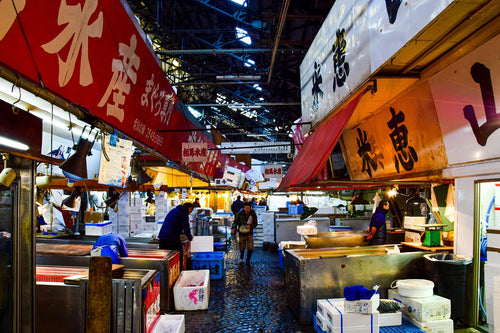
Guide to Rail Travel in Japan
Japan’s extensive rail network is one of the most efficient, punctual, and convenient ways to explore the country. With world-famous bullet trains (shinkansen), scenic local routes, and various rail passes designed specifically for tourists, traveling by rail allows visitors to access cities, towns, and remote regions with ease. This guide will cover everything you need to know about rail travel in Japan, from navigating different train types and ticketing systems to must-have rail passes and tips for a smooth journey.
1. Overview of Japan's Rail Network
Japan’s rail network is expansive, connecting all major cities and regions across the country. Operated by Japan Railways (JR) and several private rail companies, the system is known for its reliability and punctuality. High-speed shinkansen trains link major cities, while local trains provide access to smaller towns and rural areas. For tourists, Japan’s rail network makes exploring the country convenient, safe, and efficient, with options ranging from rapid express trains to scenic regional lines.
2. Types of Trains
Japan’s rail system offers several types of trains, each suited to different travel needs:
Shinkansen (Bullet Trains)
The high-speed shinkansen network connects cities from Hokkaido to Kyushu. Known for speeds of up to 320 km/h, shinkansen trains are the fastest way to travel long distances. Popular routes include the Tokaido Shinkansen, which links Tokyo, Kyoto, and Osaka.
Limited Express Trains
Limited Express trains provide rapid service between major cities and regions, offering fewer stops than local trains. They are ideal for mid-range journeys where shinkansen are not available.
Rapid and Local Trains
Rapid trains skip some stations and cover distances faster than local trains, which stop at every station. Both types serve urban and suburban areas, with local trains reaching rural stations, making them ideal for exploring smaller towns.
3. Rail Passes for Tourists
Several rail passes offer unlimited travel within specific regions or on select JR lines. These passes are exclusive to international visitors and provide excellent savings:
Japan Rail Pass
The Japan Rail Pass offers unlimited travel on all JR lines nationwide, including most shinkansen routes. Available in 7, 14, and 21-day options, this pass is ideal for travelers covering multiple regions.
Regional Rail Passes
For those exploring specific areas, JR offers regional passes, such as the JR Kansai Pass and JR Hokkaido Pass. These passes are cost-effective for travel within one region, especially for short trips.
Other Passes
Some private rail companies, like Odakyu and Tobu, offer passes covering routes and attractions around Tokyo and other cities, providing flexibility at lower costs.
4. Ticketing and IC Cards
Understanding Japan’s ticketing system ensures a hassle-free travel experience. Options include single tickets, IC cards, and reserved seating:
Single Tickets
Single tickets can be purchased at ticket machines or counters. While convenient for short journeys, they may not be cost-effective for extended travel.
IC Cards
IC cards like Suica and Pasmo are rechargeable smart cards that allow cashless travel on trains, buses, and even some shops. These cards simplify transfers and are compatible across most of Japan.
Reserved and Non-Reserved Seating
Shinkansen and Limited Express trains offer both reserved and non-reserved seats. Reserved seating, which can be booked at ticket counters or online, guarantees a seat, especially on popular routes during peak times.
5. Navigating Train Stations
Japanese train stations, particularly in major cities, can be large and complex, featuring multiple entrances, exits, and shopping areas. Signage in English is common, and station staff are generally helpful:
Best for: Travelers who prefer efficient and organized transit hubs for easy navigation.
6. Train Etiquette
Respectful behavior on trains contributes to a smooth travel experience for everyone. Here are some key etiquette guidelines:
- Keep noise levels low and avoid phone conversations.
- Offer seats to the elderly, disabled, and those with small children.
- Refrain from eating on local and rapid trains. Eating is acceptable on long-distance shinkansen and Limited Express routes.
7. Popular Rail Routes and Scenic Journeys
Japan’s railways offer scenic journeys that showcase the country’s diverse landscapes and seasonal beauty:
Tokaido Shinkansen (Tokyo to Osaka)
This iconic route connects Tokyo, Nagoya, Kyoto, and Osaka. The journey offers views of Mount Fuji on clear days, blending city and nature along the way.
Hida Limited Express (Nagoya to Takayama)
The Hida route travels through the Japanese Alps, with stunning views of rivers, mountains, and rural villages. This scenic journey is especially beautiful in spring and autumn.
Resort Shirakami (Akita to Aomori)
This sightseeing train travels along the rugged coastline of northern Japan, with views of the Sea of Japan and lush forests. It’s popular among nature enthusiasts and photographers.
8. Tips for Smooth Rail Travel
Here are a few tips to enhance your rail travel experience in Japan:
- Plan ahead, especially if traveling during peak seasons when seats may fill up quickly.
- Store luggage securely to avoid blocking aisles, particularly on crowded trains.
- Download travel apps like Hyperdia or Japan Transit Planner for real-time scheduling information.
Conclusion
Traveling by rail in Japan is a fantastic way to explore the country’s urban centers, scenic landscapes, and remote areas. With a variety of train types, convenient ticketing options, and region-specific rail passes, Japan’s rail system accommodates all types of travelers. Armed with this guide, you’re ready to navigate the intricacies of Japanese rail travel and make the most of your journey through this beautiful and fascinating country. Happy travels!
공유하다
You may also like
-

일본의 러브호텔 지구 방문: 무엇을 기대해야 할까
일본의 러브호텔 지구는 프라이버시, 창의성, 그리고 약간의 사치스러움이 독특하고 매력적으로 혼합된 것으로 유명합니다. 원래는 커플에게 사적인 휴양지를 제공하기 위해 설계되었지만, 러브호텔은 일본 문화와 환대의 ...
-

일본의 기모노 유산: 상징주의, 스타일, 그리고 볼 곳
일본의 전통 의상인 기모노는 일본 문화를 아름답고 상징적으로 표현한 것입니다. 복잡한 패턴과 색상부터 착용 방식까지 기모노는 수세기의 역사, 전통, 예술성을 구현합니다. 원래는 남성과 여성의 일상복이었던 기모노...
-

일본 불꽃놀이 축제 가이드: 언제, 어디로 가야 할까
"하나비 타이카이"(花火大会)로 알려진 일본의 여름 불꽃놀이 축제는 전국에서 가장 기대되는 이벤트 중 하나로, 눈부신 색상과 빛의 디스플레이를 보기 위해 많은 군중을 끌어들입니다. 수세기 된 전통에 뿌리를 둔 ...
-

도쿄 시장 가이드: 쓰키지와 도요스 시장 탐험
도쿄의 쓰키지와 도요스 시장은 미식가와 일본의 풍부한 요리 문화에 관심이 있는 사람이라면 꼭 방문해야 할 곳입니다. 두 시장 모두 방문객에게 일본 해산물 산업의 심장부를 엿볼 수 있는 기회를 제공하며, 신선한...




